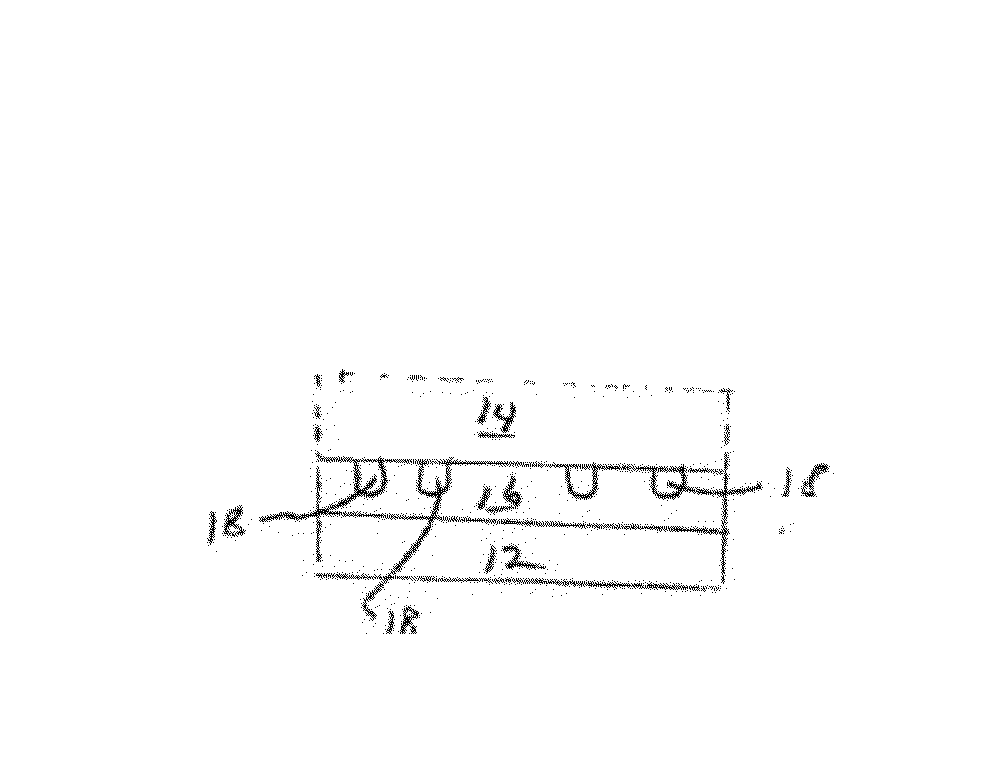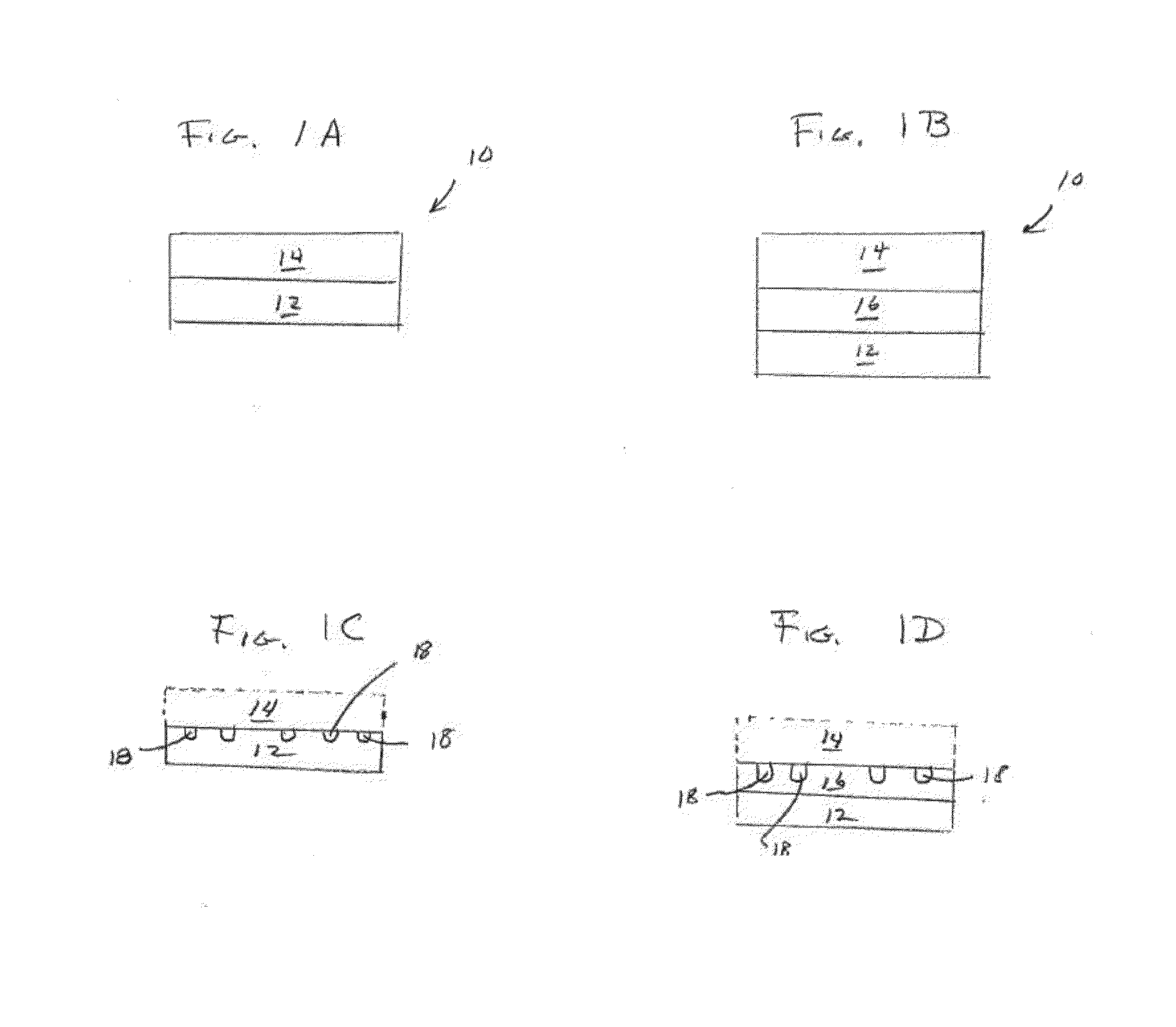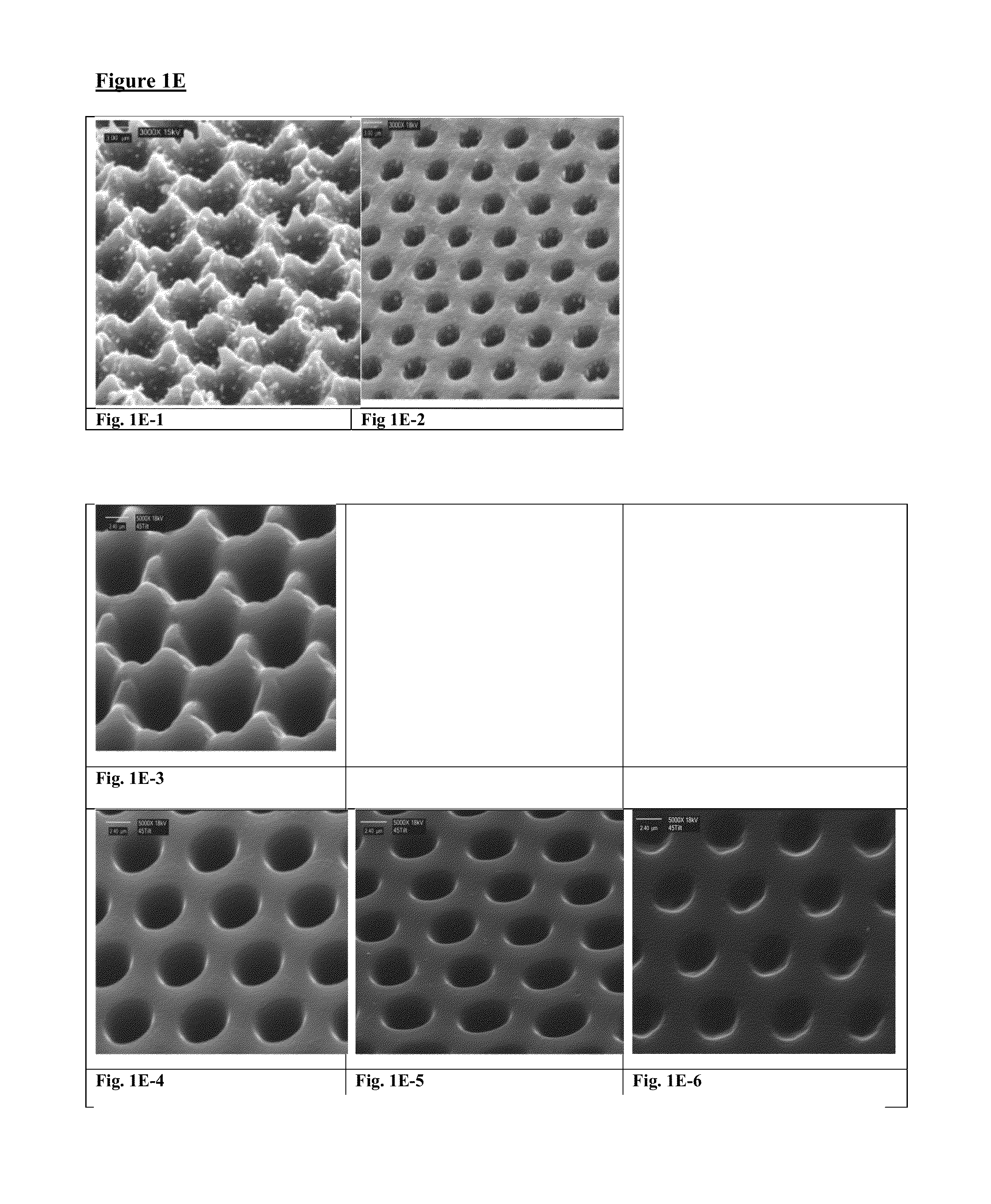Microcavity carrier with image enhancement for laser ablation
a microcavity carrier and laser ablation technology, applied in the direction of layered product treatment, synthetic resin layered products, packaging, etc., can solve the problems of severe deformation of the resolution achievable by such a process, and achieve the effect of improving reproducibility, wide process windows, and improving release properties
- Summary
- Abstract
- Description
- Claims
- Application Information
AI Technical Summary
Benefits of technology
Problems solved by technology
Method used
Image
Examples
Embodiment Construction
[0021]Liang '700 is incorporated herein, in its entirety, by reference.
[0022]FIG. 1A is a cross-sectional view of a carrier sheet, web or belt 10 in accordance with one embodiment of the invention. The carrier sheet 10 includes a substrate 12 which is overcoated with a IEL 14 that may be directly bonded to the substrate 12. In another embodiment, as shown in FIG. 1B, the carrier 10 may optionally include an intermediate cavity-forming layer 16 which may be interposed between the IEL layer 14 and the substrate 12. In a particular embodiment the substrates 12 are formed by polyethylene terephthalate (PET), PEN, polyimide, etc., and the IEL 14 is a thin overcoat of an imaging enhancement sacrificial layer such as the PKFE and PKHB phenoxy resins (identified below). The microcavities are able to provide ultra-fine pitch and spacing
[0023]FIGS. 1C and 1D illustrate the carrier shown in FIG. 1A after formation of the microcavities 18 in the carrier 10 by laser ablation and after removal of...
PUM
| Property | Measurement | Unit |
|---|---|---|
| aspect ratio | aaaaa | aaaaa |
| aspect ratio | aaaaa | aaaaa |
| diameter | aaaaa | aaaaa |
Abstract
Description
Claims
Application Information
 Login to View More
Login to View More - R&D
- Intellectual Property
- Life Sciences
- Materials
- Tech Scout
- Unparalleled Data Quality
- Higher Quality Content
- 60% Fewer Hallucinations
Browse by: Latest US Patents, China's latest patents, Technical Efficacy Thesaurus, Application Domain, Technology Topic, Popular Technical Reports.
© 2025 PatSnap. All rights reserved.Legal|Privacy policy|Modern Slavery Act Transparency Statement|Sitemap|About US| Contact US: help@patsnap.com



